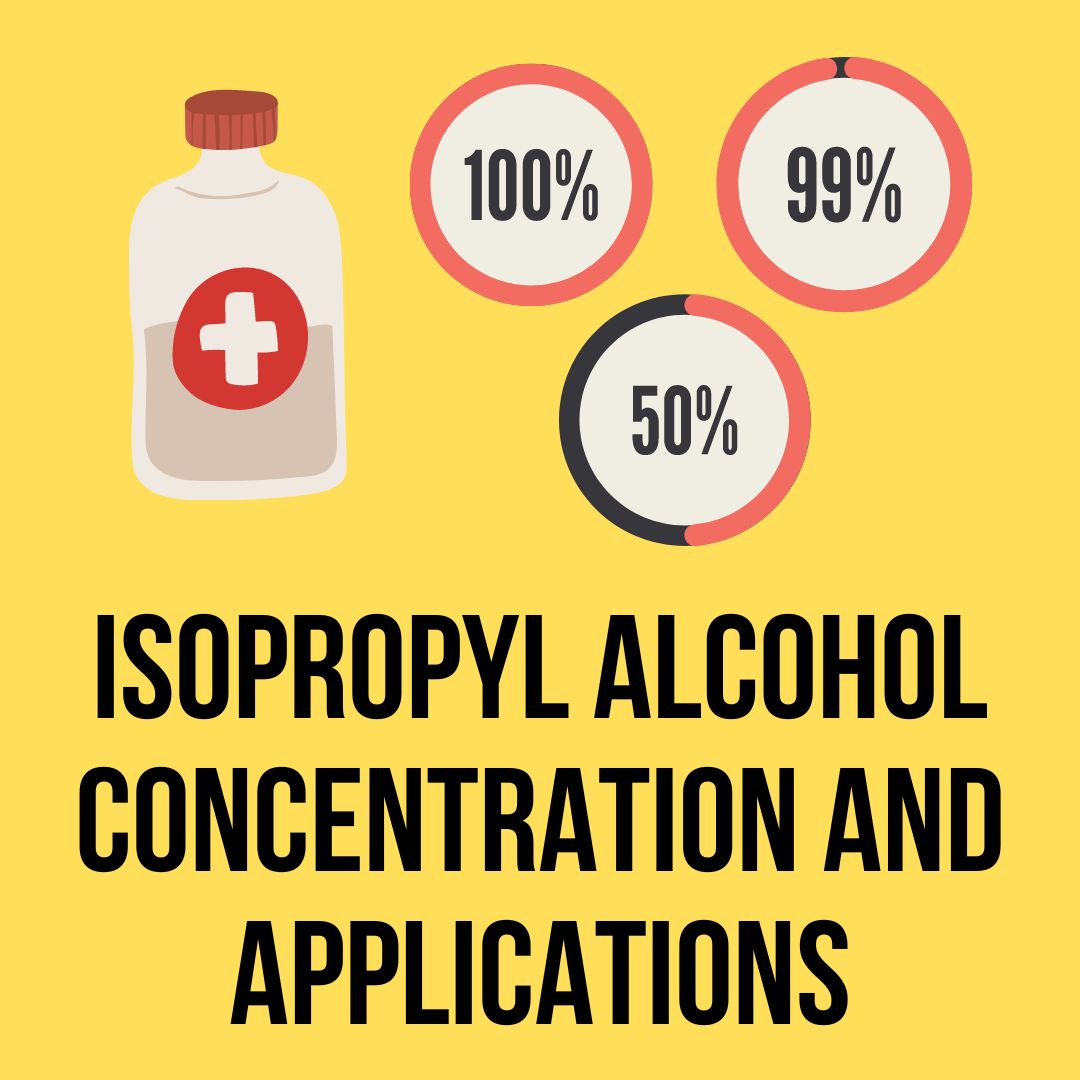
The percentage of isopropyl alcohol (IPA) in a solution, such as rubbing alcohol or other disinfectants, is a critical factor that influences its properties and effectiveness. The percentage indicates the concentration of isopropyl alcohol about the total volume of the solution. Here are some key differences based on different percentages of isopropyl alcohol:
100 Rubbing Alcohol:
- Concentration: 100% isopropyl alcohol.
- Applications:
- Specialized Cleaning: Used in specific applications where a high concentration is required for rapid evaporation, such as in some laboratory settings.
- Disinfecting Equipment: Ideal for cleaning and disinfecting laboratory equipment and surfaces that require a high level of purity.
91 Rubbing Alcohol:
- Concentration: 91% isopropyl alcohol, with the remaining 9% being water.
- Applications:
- Electronics Cleaning: Suitable for cleaning electronics and sensitive components due to its relatively high purity and faster evaporation compared to lower concentrations.
- Surface Disinfection: Effective for general surface disinfection where rapid drying is desirable.
99 Rubbing Alcohol:
- Concentration: 99% isopropyl alcohol, with minimal water content.
- Applications:
- Specialized Cleaning: Commonly used in laboratories, cleanrooms, and other environments where high-purity cleaning is essential.
- Medical and Healthcare: Sometimes used in medical settings for surface disinfection and certain procedures where rapid evaporation is crucial.
70 Rubbing Alcohol:
- Concentration: 70% isopropyl alcohol, with 30% water.
- Applications:
- Medical Use: Widely used in healthcare for general skin disinfection before injections or minor medical procedures.
- General Disinfection: Suitable for disinfecting surfaces, equipment, and hands due to its slower evaporation, allowing for extended contact time with pathogens.
50 Rubbing Alcohol:
- Concentration: 50% isopropyl alcohol, with 50% water.
- Applications:
- Mild Disinfection: Used in situations where a less concentrated solution is preferred for mild disinfection, such as cleaning wounds or applying on the skin.
- Personal Care: Sometimes used in cosmetic and personal care products where a lower concentration is suitable.
Key Considerations:
Evaporation Rate:
- The higher the percentage of isopropyl alcohol, the faster it tends to evaporate. This is a critical factor in choosing the right concentration for specific applications. For instance, higher concentrations are preferred in situations where rapid drying is essential.
Disinfecting Properties:
- While all concentrations of isopropyl alcohol have disinfecting properties, the lower concentrations (70% and 91%) are often considered more effective than 99% for certain uses. This is because the presence of water helps the alcohol penetrate and disrupt the cell walls of microorganisms.
Safety Concerns:
- Higher concentrations of isopropyl alcohol are more flammable and may pose additional safety risks. It’s important to handle all concentrations with care and follow safety guidelines, especially when using them in environments with open flames or heat sources.
Cost and Availability:
- Generally, higher concentrations of isopropyl alcohol are more expensive. The availability of different concentrations may also vary, with 70% being more commonly found in household settings and 99% being available in more specialized stores.
Summary
Selecting the appropriate isopropyl alcohol concentration depends on the specific application, safety considerations, and desired properties for a given task. Always follow safety guidelines and product recommendations for effective and safe use.
In summary, the choice of the percentage of isopropyl alcohol depends on the specific use case and the desired properties of the solution. Each concentration has its advantages and considerations, and users should select the appropriate percentage based on the intended application and safety guidelines.

My name is Logan, and I’m a 36-year-old dad who owns a small pressure-washing company in the suburbs of Atlanta, Georgia. My main goal with rubbing-alcohol.com is to show you how versatile isopropyl rubbing alcohol can be! I hope. You find it useful.
